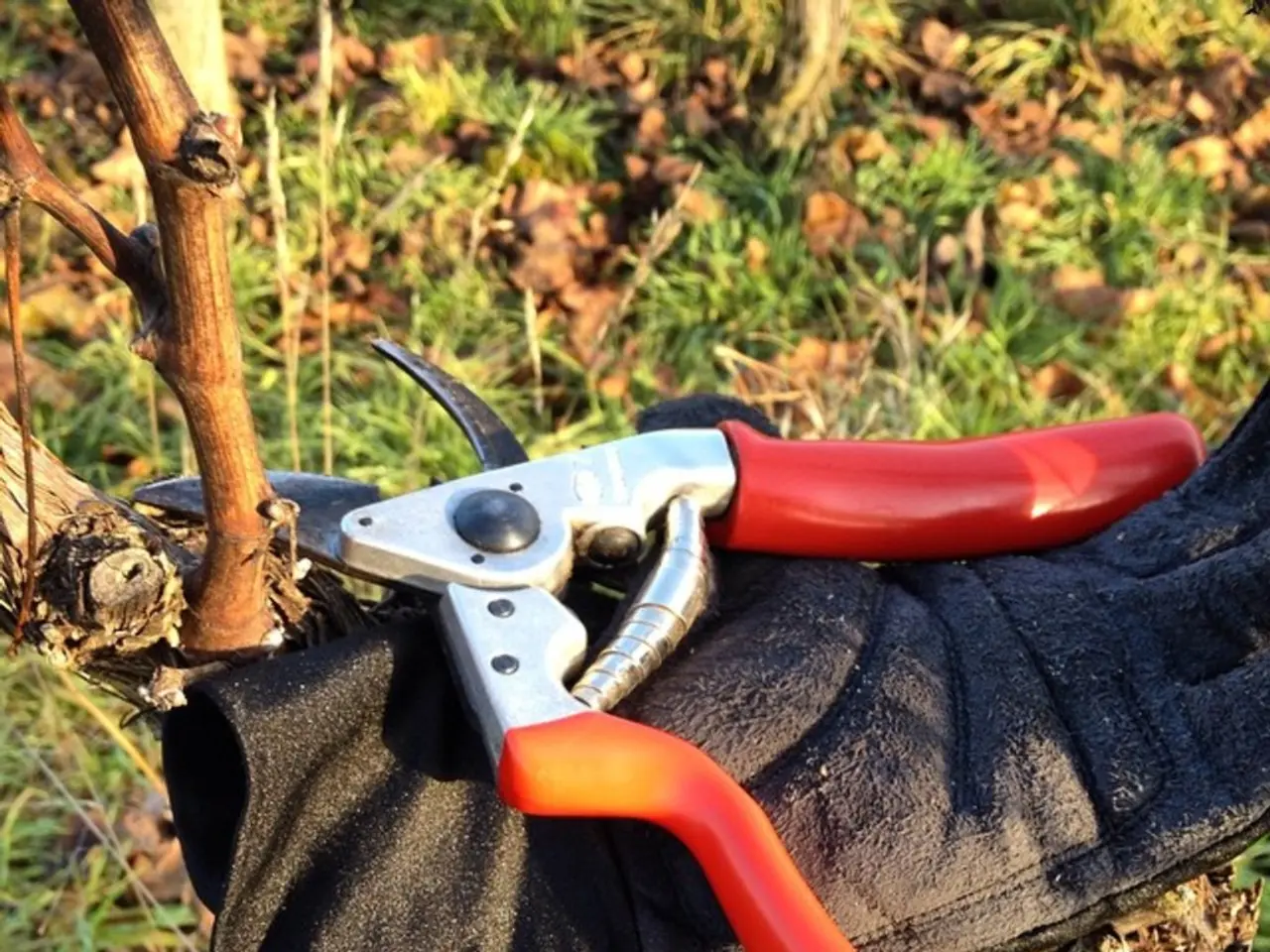Frequency of lawn mowing in summer months
In the quest for a lush, vibrant garden, it's essential to strike a balance between maintaining a neat appearance and preserving the environment. Here's a comprehensive guide on sustainable lawn mowing practices that promote healthier turf while minimizing negative impacts on the ecosystem.
Meadows with tall grass store moisture better and protect the soil from drying out, allowing gardeners to water less often. This not only benefits the grass but also attracts a variety of beneficial insects, such as birds, ladybugs, hoverflies, and parasitic wasps, which help control pests like aphids and snails.
Mowing less often provides a chance for wildflowers like clover, daisies, or dandelions to grow, which are a valuable food source for wild bees, butterflies, and other insects. Leaving an island or a border strip with sufficient flowering plants is beneficial.
Regular mowing leads to a dense, soft lawn and helps against invasive weeds like crabgrass. However, it's crucial to avoid cutting more than one-third of the grass blade height in a single mowing to avoid stressing the grass. Maintaining a mowing height of about 2.5 to 3 inches in late summer improves moisture retention and root health.
For shady areas, leave the grass about a centimeter longer. In dry weather and on hot days, less should be cut to prevent the grass from being damaged. It's also important to keep mower blades sharp for clean cuts that minimize damage to grass blades.
Avoid mowing when the grass is wet, as it causes uneven cuts and clumping. Instead, wait for the grass to dry for best results. Mowing more frequently does not necessarily prevent the growth of weeds like dandelions, broadleaf plantain, henbit, and creeping buttercup. A weed puller is necessary for these types of weeds.
Evenly distributed and finely cut mulch protects the lawn from drying out and promotes the formation of humus and nutrients in the soil. Intensively used areas can be mowed more frequently, but the cut grass should be removed to prevent too many nutrients from entering the soil. A too-short cut can harm the growth of the grasses as the exposed grass roots may suffer.
The German Federal Environmental Agency recommends mowing the lawn as rarely as possible, ideally when it is 20 centimeters high, and with the highest cutting height the lawnmower offers.
For environmental benefits, mow your lawn consistently but only as needed based on grass growth, generally every 7 to 10 days during the active growing season, avoiding a strict weekly schedule. This regular mowing helps the grass absorb sunlight and nutrients better, promoting healthier, denser turf while preventing overgrowth.
Water lawns in the early morning (between 6 a.m. and 10 a.m.) since watering then reduces evaporation and allows the grass to dry before nightfall, which protects against disease. Mowing can be adjusted based on weather; for example, during dry spells, cool-season grasses may need more frequent mowing, while during slow growth times, mowing can be less frequent.
For a cleaner environment, consider using electric or robotic mowers powered by rechargeable batteries to reduce emissions and noise pollution, contributing to a healthier planet compared to gas-powered mowers. Smart scheduling on robotic mowers also optimizes mowing frequency and energy use.
In summary, mow your lawn regularly but adapt frequency to growth and weather conditions, cut no more than one-third of the grass height, keep blades sharp, avoid mowing wet grass, and water early in the day to maximize environmental benefits and lawn health. Using eco-friendly mowing tools further supports sustainability.
Read also:
- Weekly Updates from the German Parliament (Bundestag)
- Rising health care staff shortages in Virginia, as revealed by a watchdog report
- Experiencing Adverse Reactions to Promacta: A Guide to Coping Strategies
- Forward-thinking entrepreneurs and digital nomads, discover a treasure trove of essential resources to empower your online journey with our curated list of top 10 start-up and digital nomad tools.




